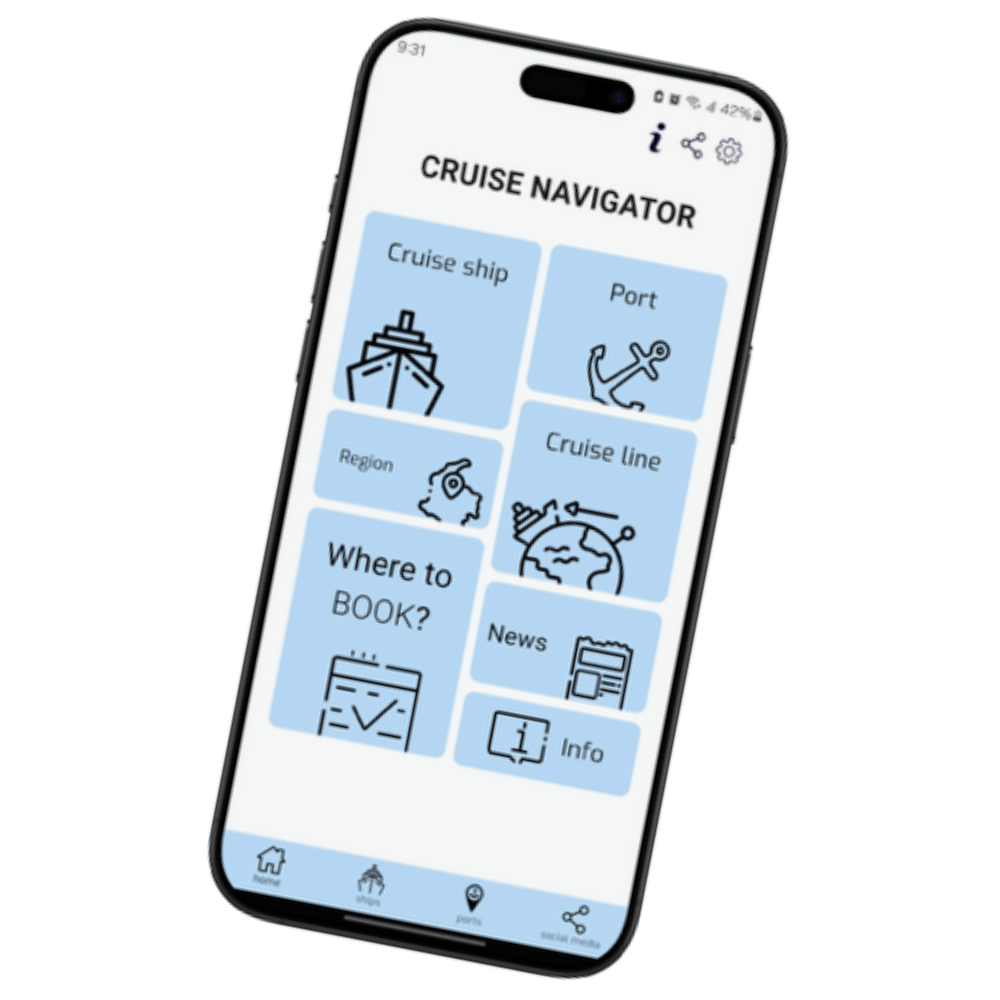How to Handle Luggage When Getting on a Cruise Ship
advice
Cruise Embarkation and How to Handle Luggage
For some new cruisers, the cruise embarkation process may seem a bit overwhelming, and they may be curious about how to handle their luggage when getting on the ship.
First, let’s define embarkation. Cruise ship embarkation is the process of passengers boarding the ship before departure, typically involving security checks, document verification, and for some cruise lines, the issuing of room keys. It often starts with guests arriving at the port, checking in their luggage, and proceeding through a series of checkpoints before finally stepping onto the vessel. Disembarkation is the process of getting off the ship.
When preparing for embarkation, cruisers must make sure they have the proper documentation and decide how they will handle getting their luggage on the ship: self-carry your own bags or let the cruise line handle it by checking your bags. But first, let’s talk about some basics of cruise ship embarkation.
How Long Does Cruise Embarkation Take?
This is a difficult question to answer because it varies so widely, depending on factors such as the size of the ship, the efficiency of the port, and the number of passengers boarding. Generally, it can take around 25-35 minutes, barring any issues like technical problems or delays in the prior cruise getting disembarked. Cruisers with priority status or who purchase priority perks, like Carnival’s Faster to the Fun or Royal Caribbean’s The Key, for instance, may enjoy a faster process.
The time to cruise embarkation may also depend on your boarding time window. Some cruise lines, like Princess for example, do not have dedicated boarding times for cruise passengers, but many do. For those requiring boarding time slots, each cruiser’s boarding time is generally determined during the online check-in process before their cruise.
What is Online Cruise Check-In and When Does it Open?
Most cruise lines require online check-in, and check-in can open 30-120 days prior to your sailing date. When you book your cruise, make a note of the online check-in date and mark it on your calendar. Why? Because if you’re one of the first to log in and check-in online, you’ll have first dibs on your preferred cruise boarding time (assuming you’re sailing a cruise line that requires a boarding window). As slots fill up, only the less desirable ones are left available for those who delay in completing their online check-in process.
The cruise check-in process online typically involves passengers logging into their cruise line’s website and providing necessary personal information, travel documents, and preferences. This also often includes selecting a boarding time. After completing the online check-in, passengers receive boarding passes and instructions for embarkation day, expediting the process at the port.
Pro-tip: Some cruisers delay the online check-in because they don’t feel like dealing with all the documentation requirements, like entering passport information. But… you don’t always have to complete everything at one time. My advice is to do online check-in the day it opens to make your preferences, namely with your preferred boarding time, save your check-in progress, and then return later to do the rest.

Cruise Embarkation & Boarding Times
There is no best time, as everyone’s circumstances vary. If you fly in to your cruise same-day for example (not advisable), and have an early flight that gets you to the port city at 9 am, you’ll likely want to board the ship in the morning. If you’re driving to the port and don’t plan to arrive until 1 pm at the latest, you’ll want to select an afternoon time. If you fly in the day before your cruise and are coming from a port city hotel, you may have more flexibility as to when you want to board the ship.
Further, your individual preferences come into play. If this is your first cruise, or you don’t have the chance to vacation frequently, you likely want to maximize your time on the cruise ship and may desire to board the ship as soon as possible. If that describes you, and you can make it to port early, select one of the earliest time slots, which usually start no sooner than 10-10:30 AM, depending on the cruise line. Keep in mind that an entire ship of cruisers must disembark your ship, and then the cruise staff must turn around the ship very quickly to welcome the new group of embarking cruisers getting on just hours later. Generally speaking, most cruisers clamor for those early time slots, so those go quickly once online check-in opens.
Which Cruise Ship Boarding Time is Best?
However, if you’re like me and cruise often, you may prioritize convenience over my time on the ship. I know that the earlier slots are in hot competition and that morning and early afternoon are the busiest times at the terminal. I also know that most cruise line staterooms aren’t open until 1:30 PM, and I don’t want to deal with checking my bags or lugging them around on the ship for hours while I wait for my room to open (more on that in a moment), so I personally aim for a 2-2:30 PM boarding time.
That’s my sweet spot, as I can then avoid most of the crowds at the terminal and walk right onto the ship and into my stateroom, carrying my own bags, and get unpacked and settled right away, which is a huge benefit. Boarding at a later time, however, does have a downside. Because it’s generally at a time after most folks eat lunch, you’ll either need to eat before boarding (versus enjoying a free meal on the ship), or you’ll delay lunch and eat once on board. Unfortunately, this time period is when the buffet and lunch spots are quite crowded.
While there’s no general best time to board a cruise ship, there may be a best time for you and your wants and needs. So consider these and determine the best time slot for you. Then be sure to select that boarding time frame just as soon as your cruise line’s online check-in opens to ensure you can snag your preferred boarding time.
Can I Board the Ship if I Arrive Before My Boarding Time?
If you arrive to the cruise terminal prior to your boarding window, you may be allowed to board early, but it’s not advisable to intentionally arrive early. First, cruise lines have designated boarding times for a reason — to make the boarding process smooth and efficient for all cruisers. Arriving outside your boarding time can muck up the process, affecting everyone.
Second, while you may get lucky and be permitted to board early, this is not guaranteed. If you’re not allowed to board before your designated boarding time, you’ll be stuck waiting in the cruise ship terminal waiting area, which isn’t the most fun place to kill time.
Is it a Problem if I Arrive After My Boarding Time?
Assuming you don’t miss the final boarding time (and that ship will not wait for you if you miss it), you shouldn’t have a problem boarding if you arrive after your designated boarding time. Stuff happens, like delayed flights and traffic, and cruise lines don’t aim to penalize cruisers if they arrive late.
Some cruise lines have a special line for cruisers who miss their boarding window, arriving too early or too late, so you may have to wait a little longer than you would had you arrived on time, but that’s generally the only penalty of missing your time.
Handling Luggage During Cruise Embarkation
Before you depart for the cruise port you’ll want to decide how to handle your luggage upon embarkation. Why? Because if you check your bags, you’ll need to print out and attach your luggage tags before getting there. Some cruise lines may be able to print tags for you at the terminal, but this is not guaranteed — so prepare in advance with your own.
While cruise lines sometimes provide guidance on luggage in terms of the maximum number of bags or weight of each bag per cruiser, unlike on a flight, these rules are rarely enforced. I’ve never once seen a bag weighed or cruiser questioned for having too many, so this isn’t something I would worry about.
Pro-tip: While some cruisers just staple or tape their luggage tags, I find this very risky, as they can easily tear off, risking your bags getting lost of delayed. I highly recommend investing in these cheap and reusable cruise-specific luggage tags.
Carrying Your Own Bags onto a Cruise Ship
Pros of Self-Carry: This gives cruisers the most flexibility, as you aren’t beholden to the cruise line to pick up and deliver your luggage. As noted above, if you board the ship around or after 1:30 PM, you have the luxury of walking straight to your stateroom with your bags to settle in and unpack. If you check your bags, you’ll have to wait—sometimes until 6:30 PM or later—for the cruise line to deliver your bags to your stateroom. You also don’t have to deal with the hassle of printing and preparing your cruise line-provided luggage tags in advance. Another benefit of self-carry is that you lower the risk of your belongings getting lost, stolen, or damaged, as they stay in your possession the entire time.
Cons of Self-Carry: Unfortunately, self-carry is a poor option for those with physical or mobility issues, as it means having to lug your bags through the terminal during boarding, up the gangway, onto the ship, and to your stateroom. This likely also involves carriage up and down stairways, as elevators on embarkation day are usually jam-packed. Further, if you board before staterooms open (around 1:30 PM), you’re stuck lugging bags around the ship when it’s arguably the most crowded.

Pros & Cons of Checked Bags on a Cruise
Pros of Checking Bags: The biggest benefit of checking your bags is the ease and convenience of not having to lug them around with you as you embark the ship, and wait for your stateroom to open, assuming you board before 1:30 PM. This may be especially appealing to cruisers with small children or mobility limitations. If you check your bags, porters at the cruise terminal will be ready to receive them as you arrive, assuming you’ve prepared and have attached your cruise line-provided luggage tags. This is where you drop off those checked bags, and it is a free service, although providing tips to the porters is customary. I typically tip $2 per bag; more if a bag is particularly heavy or oversized.
Cons of Checking Bags: Checking your bags means taking a chance that the cruise line may lose or damage your bags, or in rare cases, something might get stolen. You’re also giving up time flexibility, as you must wait for your bags once you’re on the ship.
Delivery of bags may not happen until 6:30 PM or later. While checked bags is a free service, there is a small cost associated with it if you choose to tip the porters who receive your bags. You must also prepare in advance with your cruise line-provided luggage tags attached to each bag.
It’s very important that if you opt to check your bags rather than self-carry, you diligently ensure that your important documents aren’t left in those checked bags. After dropping off checked bags with the porter, you’ll then go through the boarding process at the terminal, and those documents (like your passport or ID, for instance) are needed for you to embark.
Related: See the Top 10 Essentials to Pack for Your Next Cruise
Does the Cruise Line Scan your Luggage?
Yes, the cruise line will scan or X-ray your bags upon embarkation, and this goes for both checked bags and those you carry on. Like at the airport, once you’ve handed over checked bags, they’re put through a scanner at the cruise terminal, where security staff will pull and examine bags with suspicious-looking. There are many items that are prohibited by cruise lines, even things like clothes steamers, so it’s important to ensure that none of these are in your bags.
If your bag is pulled for a prohibited item, you’ll likely not receive your bag delivered to your stateroom as is usually the case. Instead, you’ll get a call to your stateroom and be asked to head to a certain location, where you can speak to security staff about whatever it was in your bag that was pulled for being prohibited, given a claim check to retrieve later your confiscated item at disembarkation, and provided your bags.
If you carry on your bags, again, like with airport security, they will be put through a scanner, and you personally will walk through one. Any suspicious-looking items will be pulled and potentially confiscated. Like prohibited items confiscated from checked bags, the process here is similar. You will receive a claim check that you can use later to retrieve your confiscated item at a designated spot in the cruise terminal upon disembarkation.

Drug Sniffing Dogs at Cruise Terminals
In addition to scanning luggage, some cruise lines or customs authorities deploy drug-sniffing dogs at cruise terminals to check for prohibited substances. And yes, that includes marijuana, even if you have a prescription for it. At cruise embarkation, cruisers may be asked to line up, put all of their bags on the floor, and a drug-sniffing dog will quickly run down the line to sniff. If the dog hits upon your bag, you will likely be pulled by security for inspection. Do not take the risk of trying to board a cruise ship with marijuana or other prohibited drugs, as it can result in a lifetime ban by the cruise line if you’re caught.
What Is the Cruise Ship Boarding Process Like?
Once you arrive at the cruise terminal, you will drop off your bags with the porter if you opted to check them, or keep them in your possession if you prefer to carry on. You’ll show your boarding pass and staff in the terminal will direct you where to go. This process is generally efficient and well organized, with lots of signage to direct you. You will then traverse the terminal, show your required documents, possibly have your photo taken for facial recognition, and board the ship.
Some cruise lines will provide you with your stateroom key, which is sometimes in the form of a bracelet like with Virgin Voyages or a medallion with Princess. If you do not receive a key during the boarding process, it will likely be at your stateroom door once they open around 1:30 PM, as is the case with Carnival and Royal Caribbean, as just two examples.
Cruise Embarkation
Be prepared because once you’re finally on board the ship, it may feel a little chaotic at first, as all of the cruisers are milling about the ship (some with their luggage in tow). This makes things crowded, and you may struggle to find an open table at the lunch buffet, for example. If you’re a first-time cruiser, though, don’t worry — it’s not always like this. Once staterooms open in the afternoon, the cruise ship will start to clear out a bit, as travelers make their way to their rooms to nap, unpack, or just get settled.
Think of cruise ship embarkation like the process of boarding an airplane. It’s just part of the process, and not always pleasant, required to enjoy that mode of travel and transportation. Once you’re on board, and those rooms open, you’ll be smooth sailing from there.
Embarkation Made Easy
BABY, LET'S CRUISE...
Let us help you plan the cruise (or trip) of a lifetime!
Subscribe to my Cruiseletter
Get juicy cruise info, insider tips, and FREE port guides, delivered straight to your inbox. Plus, you'll get my FREE Cruise Packing List & Planner, and I promise to never spam you.
By submitting this form, you're agreeing to receive emails from Professor Melissa. Don't worry, your info is safe with me. We'll never share or sell it. You can also unsubscribe at any time.
Categories
GET THE FREE CRUISE PACKING LIST & PLANNING GUIDE
Want to Book a Cruise?
My Amazon Cruise Faves
Cruise Pod: New Episode Every Tuesday
Become a Travel Agent
Travel Insurance Info
Get my FREE Port Guides on the go with CruiseLegend
Recent Posts






